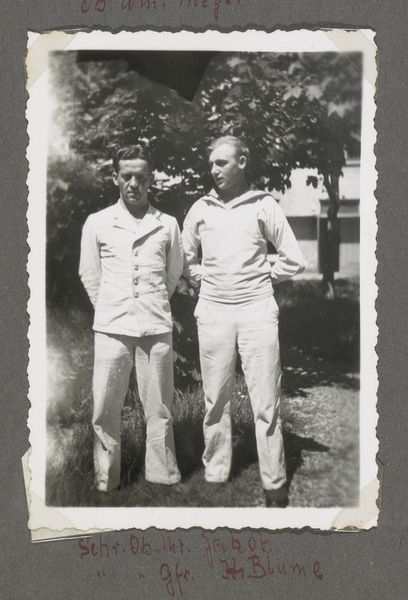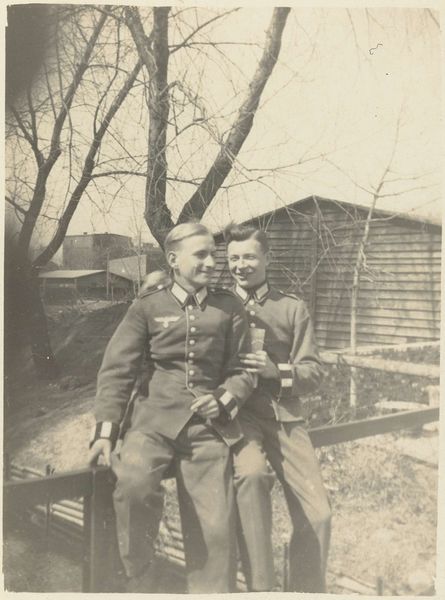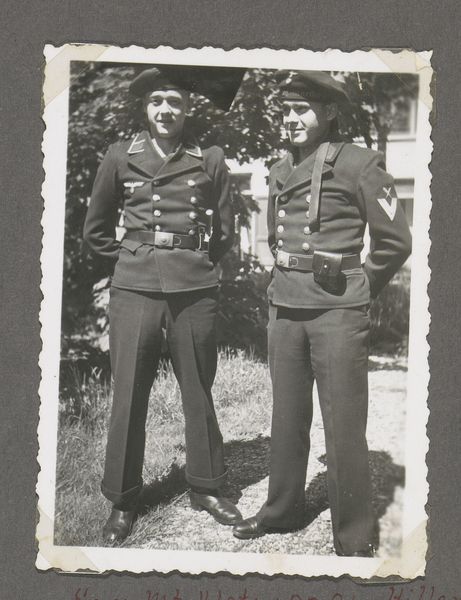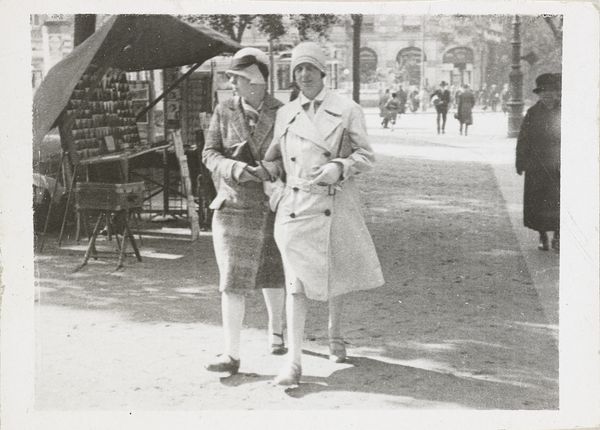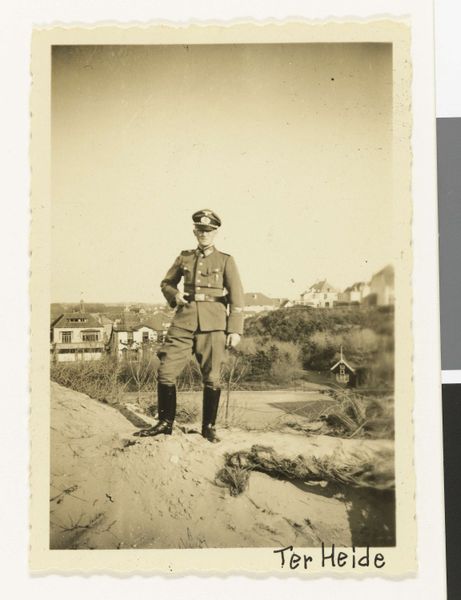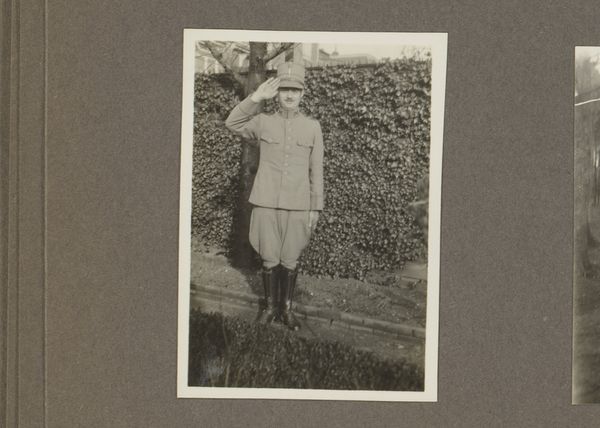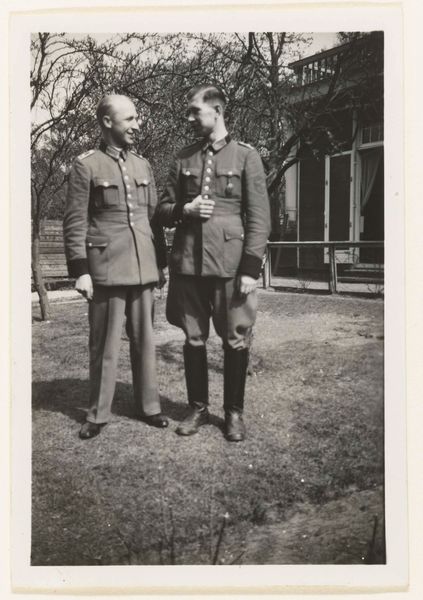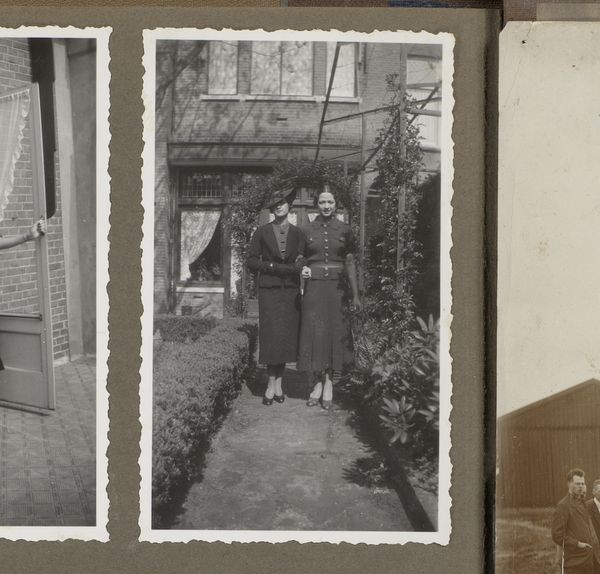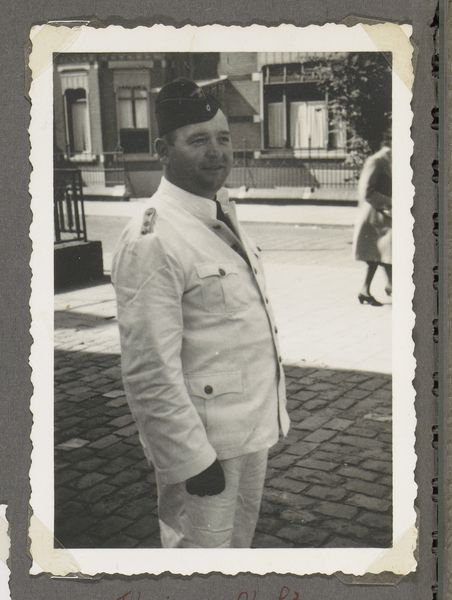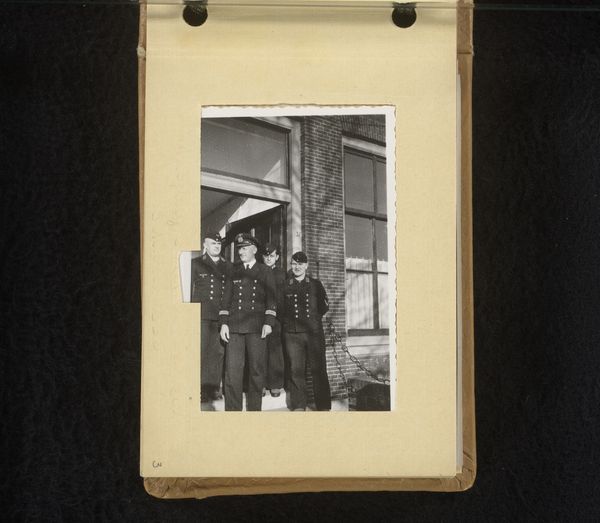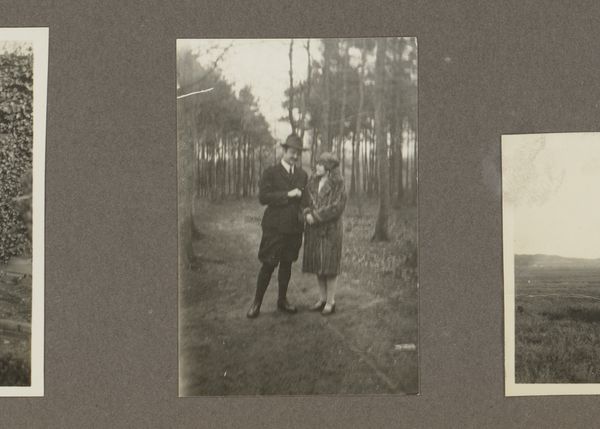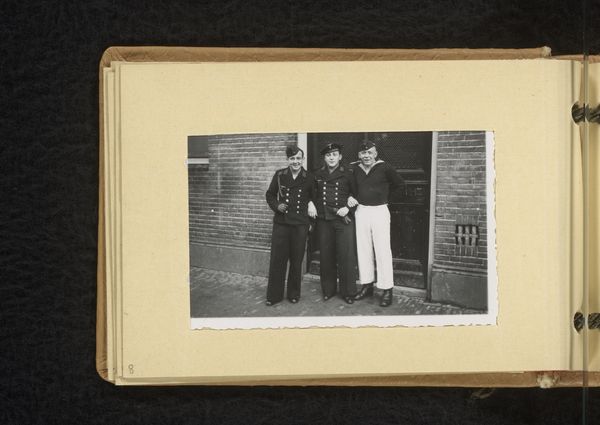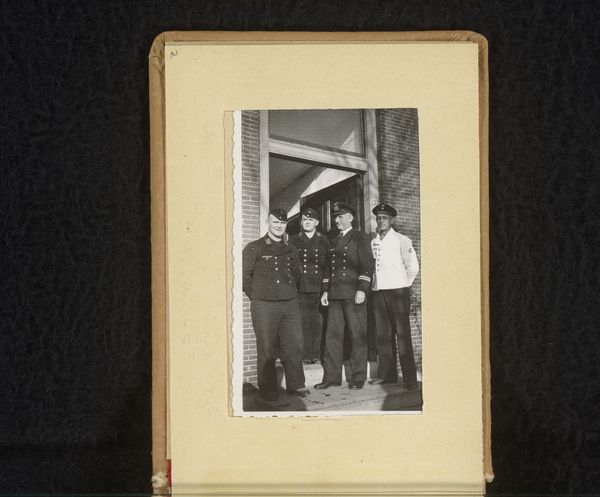
photography, gelatin-silver-print
#
portrait
#
street-photography
#
photography
#
gelatin-silver-print
#
genre-painting
#
modernism
Dimensions: height 90 mm, width 70 mm
Copyright: Rijks Museum: Open Domain
Curator: Today, we're examining a gelatin silver print titled "Werner in Toulon," dating roughly from 1943 to 1946. Editor: The composition immediately strikes me as unsettling. There's a stark, almost confrontational directness in the way these figures are presented, compounded by the tonal contrasts in the black and white. Curator: Indeed. Toulon, during this period, was marked by transition, from German occupation to liberation and subsequent rebuilding. It seems this work offers us a glimpse into the lives affected. Editor: You can almost feel the labor involved just in developing the print; the stark contrasts and textures weren't easily achieved, giving this snapshot an aesthetic as crafted as any painting of the era. It adds to the picture’s impact. Curator: Right. The image presents two soldiers in uniform, posed in what appears to be a street. But who were these soldiers? The work invites us to consider the lives of ordinary servicemen within this historical moment, particularly how the machinery of conflict permeates even casual moments. The background details feel as weighted as the foreground portraits. Editor: It raises the question of labor too. The garments, were they mass produced or tailored? Where were the textiles sourced? This piece urges us to confront the network of production and the conditions it imposed on the garment workers. Curator: Certainly, though I would contend its main achievement is the subtle humanizing quality. "Werner in Toulon" prompts an important historical reading but balances the institutional framing with the subjects’ intimate reality. Editor: It shows us how that reality is inescapably produced by a system though; there’s an undeniable tension between the individual portrayed, and the broader socioeconomic context of the war made manifest in materials. Curator: It does so through very traditional, almost austere means. Editor: True, but those constraints shouldn't make us any less vigilant towards interrogating that reality. It's this interplay that elevates a simple photographic document to something quite powerful. Curator: Absolutely. This artwork gives us space to examine both micro and macro histories. Editor: And demands that we scrutinize not just who we see, but also what makes that image and its world possible.
Comments
No comments
Be the first to comment and join the conversation on the ultimate creative platform.
